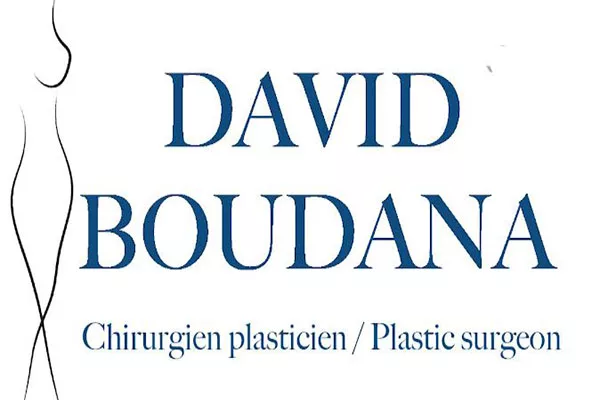Breast augmentation surgery is one of the most popular cosmetic procedures performed worldwide. Many women undergo this procedure to enhance the shape and size of their breasts. While the results of the surgery are usually immediate, it is important to note that the breasts will continue to change in the weeks and months following surgery. One of the most significant changes that occur after breast augmentation is known as “drop and fluff.” In this article, we will discuss what drop and fluff is, how it happens, and what you can expect during the drop and fluff process.
What is Drop and Fluff?
Drop and fluff is a term used to describe the natural process that occurs as breast implants settle into their new position and the surrounding tissues adjust to their presence. During surgery, the implants are placed either above or below the chest muscles, and this can affect the way the breasts look immediately after surgery. As the implants “”drop”” into place and the tissues “”fluff”” around them, the breasts will gradually take on a more natural look and feel. The process usually starts a few days after surgery and can take up to six months to fully complete.
Why Does Drop and Fluff Happen?
Drop and fluff happens because the breast tissue, skin, and muscles need time to adjust to the new weight and shape of the implants. After surgery, the breasts may appear high on the chest, feel tight, and lack a natural slope. This is because the implants are still sitting high, and the surrounding tissues have not yet stretched to accommodate the new size and shape. Over time, the weight of the implants and the natural pull of gravity cause the implants to slowly settle into place. As this happens, the breasts will start to take on a more natural shape and position.
What Can You Expect During Drop and Fluff?
During the drop and fluff process, you can expect to see changes in the shape, position, and size of your breasts. These changes will happen gradually over several weeks and months, and they may include:
- A gradual decrease in swelling and bruising.
- The implants settling into a more natural position.
- A more pronounced slope and curve to the breast.
- Softening of the breast tissue and a more natural feel to the breasts.
- A slight increase in breast size as the tissues adjust to the new implants.
- Changes in nipple position and the shape of the areolas.
- A more natural appearance to the cleavage area.
It is important to keep in mind that everyone’s experience with drop and fluff is different, and the changes that you see in your breasts may not be exactly the same as someone else’s. Patience is key during this process, as it can take several months for the final results to become fully visible.
How Can You Help Drop and Fluff Along?
While the drop and fluff process is a natural part of breast augmentation, there are a few things that you can do to help it along:
- Follow your surgeon’s post-operative instructions carefully to ensure proper healing.
- Wear a supportive bra or compression garment as recommended by your surgeon.
- Avoid vigorous exercise or activities that could strain the chest muscles for several weeks after surgery.
- Massage the breasts as instructed by your surgeon, which can help the implants settle into place more quickly.
- Be patient and allow your body time to adjust to the new implants.
It is important to remember that while you can help the drop and fluff process along, you should not do anything that your surgeon advises against. Doing so could lead to complications or adversely affect your results.
When Should You Expect Drop and Fluff to Occur?
The drop and fluff process varies from person to person, and there is no set timeline for when it should occur. That being said, most women start to see changes in their breasts within the first few weeks after surgery. By the six-week mark, the implants should have started to settle into place, and the breasts should be looking more natural. However, the final result may not be visible for several months, as the tissues continue to adjust to the new implants. Your surgeon will be able to provide you with a more specific timeline based on your individual case.
What If Drop and Fluff Doesn’t Happen?
In most cases, drop and fluff is a natural part of the breast augmentation process, and patients can expect to see their breasts take on a more natural shape and position over time. However, in some cases, drop and fluff may not occur as expected. This could be due to a number of factors, including the type of implants used, the placement of the implants, and the patient’s individual anatomy. If you are concerned that drop and fluff is not happening as it should be, it is important to speak to your surgeon. They can examine your breasts and determine if any further intervention is needed.
Can Drop and Fluff Happen with Revision Surgery?
Drop and fluff can occur after revision surgery, depending on the type of revision that was performed. If the revision surgery involves changing the position or size of the implants, then drop and fluff will occur as the new implants settle into place. However, if the revision involves removing or replacing the implants, then drop and fluff may not be as pronounced. This is because the surrounding tissues have already stretched to accommodate the previous implants, and there may not be as much “settling” required. Your surgeon will be able to provide you with a more accurate idea of what to expect based on the specifics of your revision surgery.
Conclusion
Drop and fluff is a natural part of the breast augmentation process, and it is important to be patient as your body adjusts to the new implants. While the process can take several months, the end result is breasts that look and feel more natural. If you have any concerns about drop and fluff or the healing process after breast augmentation surgery, it is important to speak to your surgeon. By following their post-operative instructions and being patient, you can ensure the best possible outcome from your breast augmentation surgery.
Additional Resources
If you would like to learn more about drop and fluff, breast augmentation surgery, or other cosmetic procedures, there are many resources available online. Some helpful websites include:
- American Society of Plastic Surgeons (ASPS): This website provides information on breast augmentation surgery, as well as other cosmetic procedures.
- RealSelf: RealSelf is an online community where patients can ask questions, share their experiences, and connect with board-certified plastic surgeons.
- Breast Implant Education: This website provides information on breast augmentation surgery, implant options, and other topics related to breast implants.
By educating yourself and seeking out reputable sources of information, you can make informed decisions about your cosmetic surgery and achieve the results you desire.
References:
– American Society of Plastic Surgeons. Breast Augmentation. (n.d.). https://www.plasticsurgery.org/cosmetic-procedures/breast-augmentation.
– Breast Implant Education. (n.d.). https://www.breastimplanteducation.com/.
– RealSelf. (n.d.). https://www.realself.com/.
– Revis, D. R., & Salisbury, M. A. (2013). Knowing When to Call: Reading the Breast Augmentation Patient. Plastic and Reconstructive Surgery, 132(4S-1), 153S–157S. https://doi.org/10.1097/PRS.0b013e31829cfaec.







